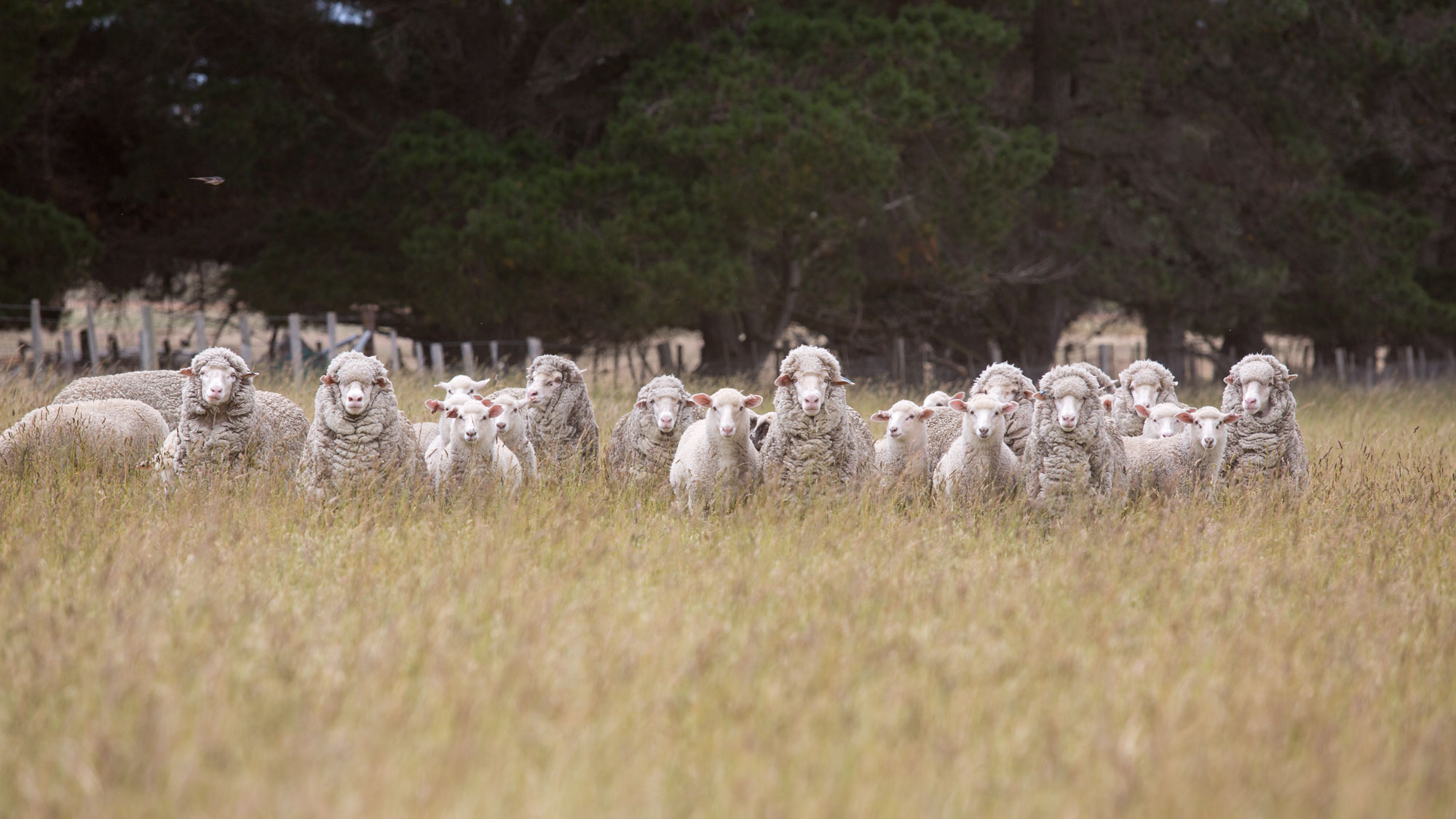Chapter 8.2 Know your animal demand
Background information
Now that pasture growth and variability are known (Chapter 8.1), you need to estimate your annual animal demand for the enterprises in your business.
Flexibility with stock numbers during the year and between years is a key element of matching animal demand to pasture supply and managing risk. How flexible you can be with stock numbers will depend on your enterprise structure and goals, value of stock, disease risks if agisting or trading stock, and your willingness to conserve or purchase fodder and concentrates.
At a glance
- Define the feed requirements for your classes of sheep
- Set condition score or liveweight targets for different stages of the year
- Identify opportunities to modify the annual animal demand curve and enterprise mix to suit your pasture supply curve
- More variable rainfall and pasture production between years requires more flexibility to manipulate stock numbers during and between years
- Set trigger points for action to cope with the yearly seasonal variation and more extreme drought conditions.
Determine feed requirements for sheep classes
Most sheep producers run a range of sheep classes on the farm, and these classes will have different nutritional needs throughout the year. Describe your classes of sheep according to:
- Sex
- Condition score, fat score and liveweight
- Stage in reproductive cycle and pregnancy status (empty, single, twin)
- Growth target (to gain or lose weight at x kg/day).
Scanning and separating ewes based on condition score and pregnancy/lambing status enables better allocation of paddocks to sheep. It is more efficient to run 3-5 year old ewes together and draft on ewe condition and pregnancy status than age groups. Suggested drafting for these mature ewes are:
- Dry ewes
- Pregnant or lactating ewes, single lambs, condition score >3
- Pregnant or lactating ewes, single lambs, condition score <3
- Pregnant or lactating ewes, twin lambs, condition score >3
- Pregnant or lactating ewes, twin lambs, condition score <3
Weaners and lactating ewes rearing twin lambs should get the best pastures, followed by single lambing ewes, pregnant ewes, hoggets, then wethers and dry ewes.
Tool 10.1 in MMFS Module 10 Wean More Lambs outlines what condition scoring is and how it is used for optimising management of your flock, Tool 10.4 in MMFS Module 10 Wean More Lambs outlines condition score targets for mature sheep and Tool 10.5 in MMFS Module 10 Wean More Lambs bodyweight targets for weaners and young ewes.
Tool 11.1 in MMFS Module 11 Healthy and Contented Sheep lists the energy and protein requirements of a range of sheep classes.
The information from table 8.1 below can then be used to match pasture resources to feed requirements. Tool 11.4 in MMFS Module 11 Healthy and Contented Sheep can help you calculate the cost of energy and protein supplements to meet animal demand where pasture supply does not meet the minimum benchmarks.
Estimate feed quality
Digestibility is a useful measure of pasture quality as it is a measure of the proportion of pasture that is absorbed and utilised by the animal and is directly related to the energy content of pasture (figure 8.8). Tool 7.6 in MMFS Module 7 Grow More Pasture shows the decline in the digestibility and energy content of temperate and tropical pastures as the plant matures.
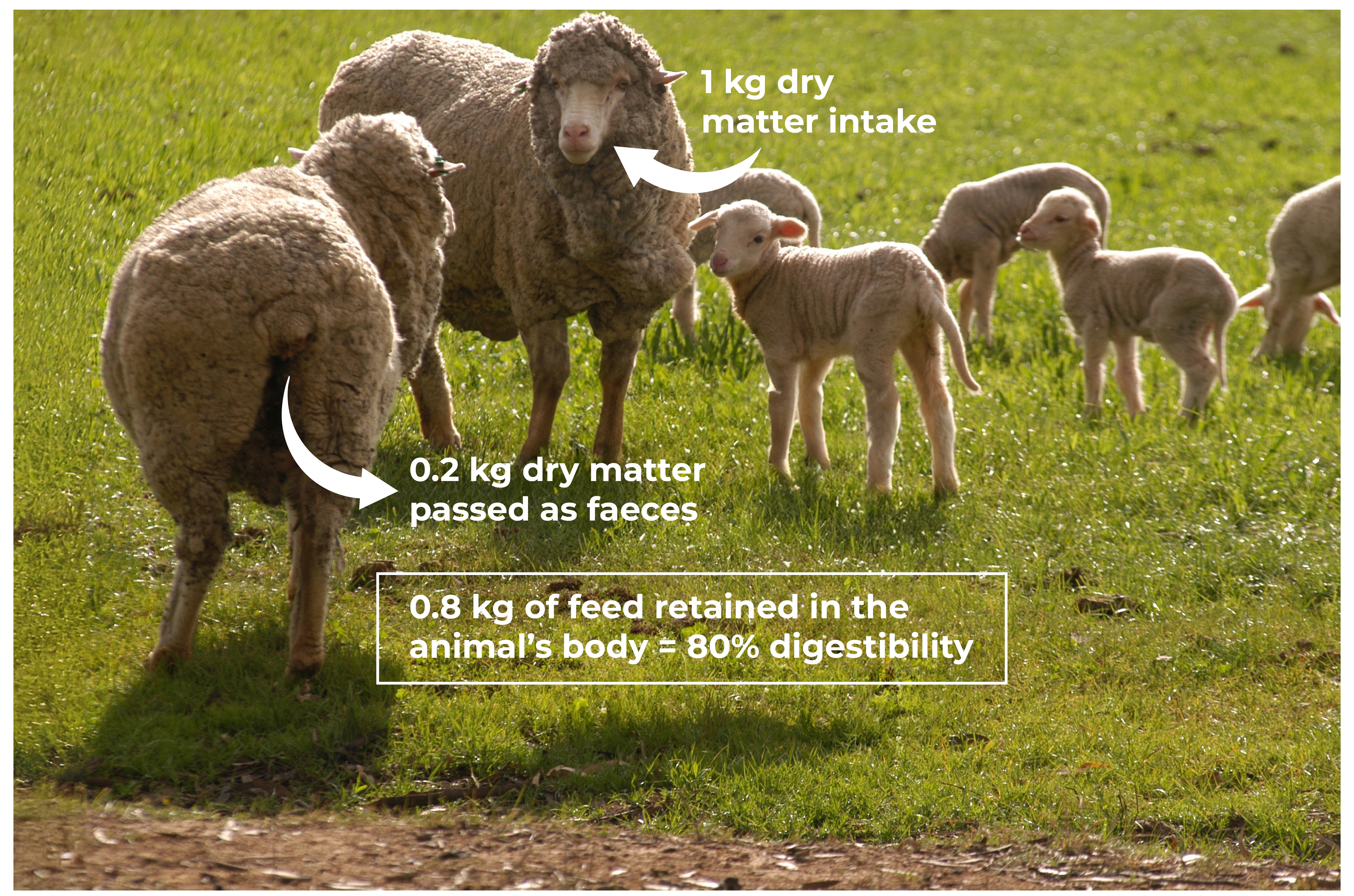
Figure 8.8 A pasture of 80% digestibility means that 80% of the pasture eaten by the animal is utilised for body maintenance and growth, with the remaining 20% of pasture passed out as faeces.
Source: DPIRD.
Energy and protein are needed by animals to maintain critical body functions and to achieve production targets for growth, wool production and reproduction.
Energy, protein and digestibility are positively correlated and primarily driven by the plant stage of growth, with early vegetative growth of plants typically having the highest feed quality. Protein content of pastures can vary significantly between species with legumes, such as clovers and lucerne, typically higher in protein than grasses.
Table 8.1 describes the pasture quality (digestibility) and quantity (FOO) benchmarks required to meet production targets of various classes of livestock. Use the benchmarks in table 8.1 as ‘trigger points’ to better match feed supply with animal demand and so improve the likelihood of meeting your production targets.
Table 8.1 Minimum pasture supply benchmarks to maintain satisfactory production levels in sheep using feed on offer (FOO).
Source: PROGRAZE®, adapted by AWI and MLA.
|
Sheep Class |
Pasture targets (kg green DM/ha) to meet minimum animal demand at three levels of pasture digestibility (%) |
|||
|
75% Digestible |
68% Digestible |
60% Digestible |
||
|
Dry sheep |
700 |
900 |
1,500 |
|
|
Pregnant ewes |
Mid pregnancy |
800 |
1,000 |
2,000 |
|
Last month |
1,000 |
1,500 |
Not suitable |
|
|
Lactating ewes |
Single lambs |
1,300 |
2,000 |
Not suitable |
|
Twin lambs |
1,800 |
Not suitable |
Not suitable |
|
|
Growing weaned lambs (% of potential growth) |
30% (75g/day) * |
700 |
1,000 |
2,000 |
|
50% (125g/day) * |
900 |
1,300 |
Not suitable |
|
|
70% (175g/day) * |
1,100 |
2,000 |
Not suitable |
|
|
90% (225g/day) * |
1,900 |
Not suitable |
Not suitable |
|
* Predicted growth rates in brackets are based on a weaned 4-month old crossbred lamb of approximately 32 kg from a ewe with a standard reference weight of 55 kg.
Tool 10.7 in MMFS Module 10 Wean More Lambs is a standard reference weight (SRW) calculator which shows you how to calculate the SRW for your flock.
If the pasture targets in table 8.1 are not met, then animal production targets will not be met. A decision will be needed to accept a lower production level, change paddock, reduce stock numbers, or supplement to meet the energy and protein requirements of the stock.
Estimate pasture mass/feed on offer
At priority stages of the year (e.g., pre-joining, scanning, lambing and weaning and managing weaners), use table 8.1 to set pasture targets for different classes of stock.
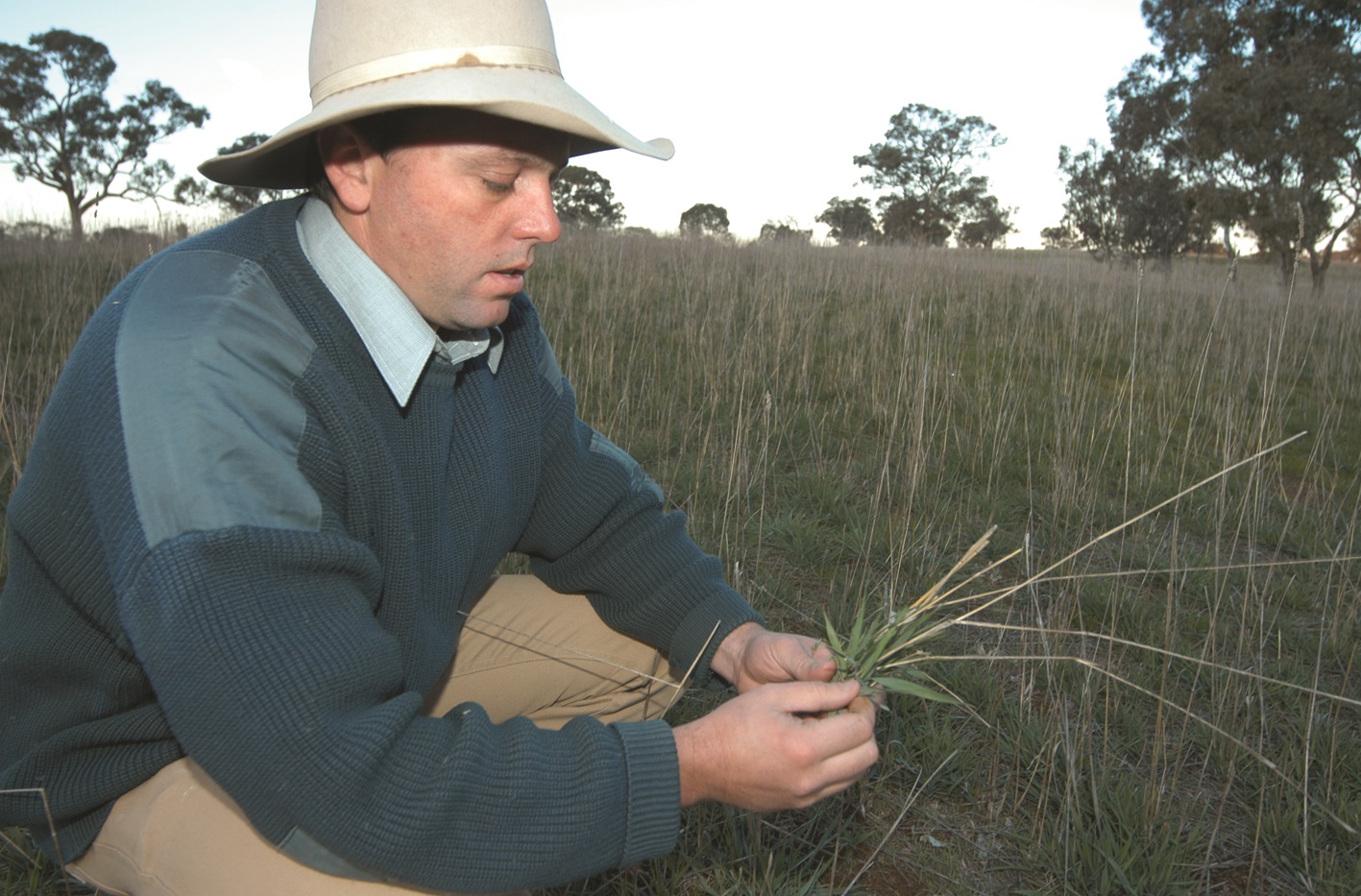
Set targets for dead pasture at the end of the growing season. Using every kilogram of dry matter produced is not only unrealistic, it will quickly undermine the sustainability of your enterprise. Some pasture will always be trampled and fouled. A significant amount of pasture must remain uneaten to provide carry-over feed for stock and maintain groundcover. Carry-over feed and groundcover are usually most critical over late summer/autumn, at the break of the season in southern regions and over summer in the north (see Chapter 6.2 and Tool 6.2 in MMFS Module 6 Healthy Soils).
Monitoring pasture mass every 1-2 weeks lets you identify and fill any impending feed gaps or feed excesses that can be used. Tool 7.6 in MMFS Module 7 Grow More Pasture and Tool 8.5 contain information to help you assess pastures.
Set annual targets for livestock classes and pasture
Plan how you want the pastures and stock to look throughout the year. An example is shown in figure 8.9 for a winter rainfall area but the principle is the same for all environments.
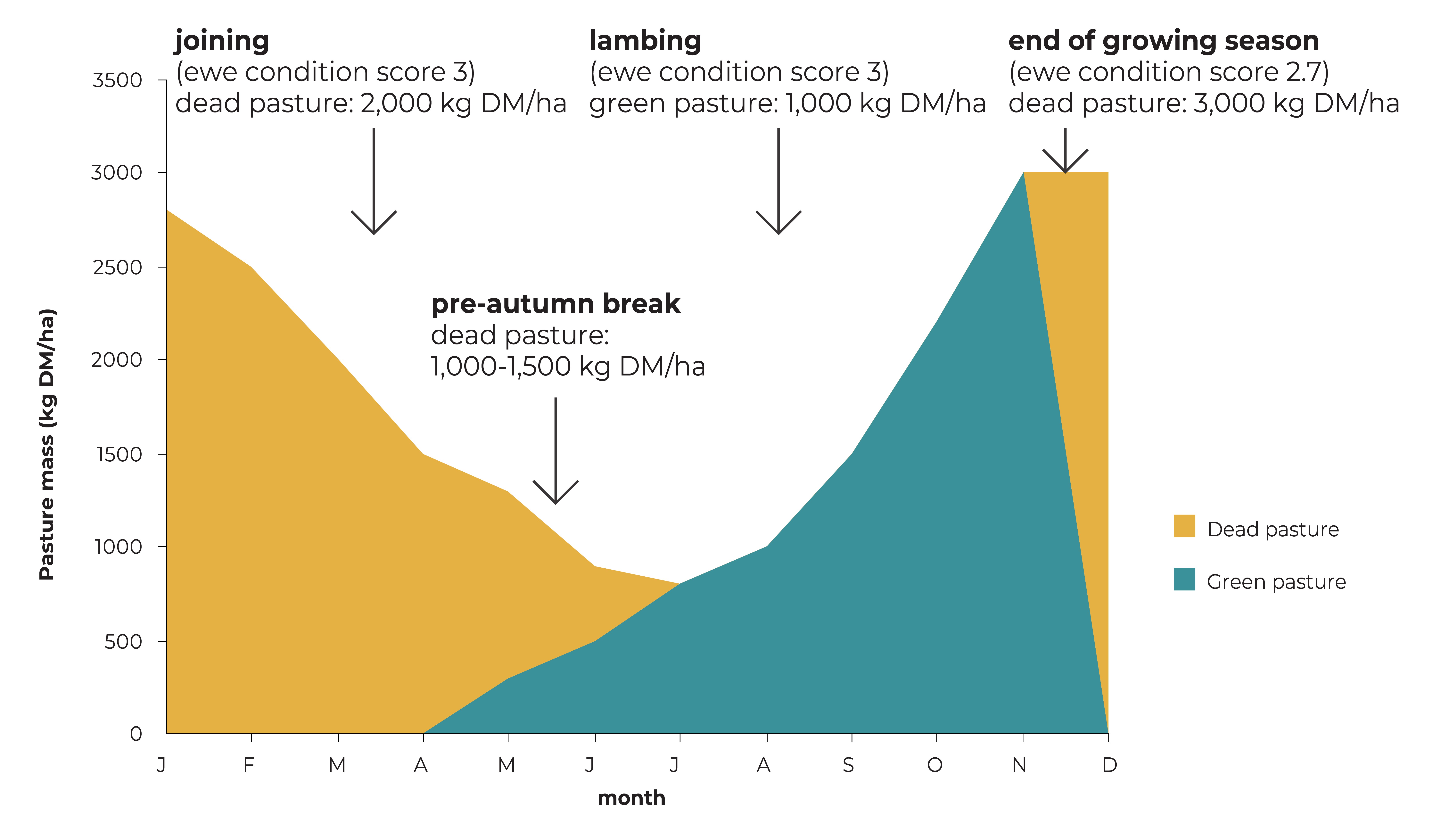
Figure 8.9 Managing the risk of increasing pasture utilisation is all about planning ahead. Set targets, monitor and have trigger points for action when things deviate from your plan. Example for northern Victoria.
Managing higher pasture utilisation is all about planning ahead (see figure 8.5.) Set targets, monitor, and have trigger points for action when things deviate from your plan.
Setting targets for pasture supply and animal demand through the year gives you the decision framework for taking action if stock condition or pasture mass deviate significantly from the plan.
Assess stock condition
Set condition score targets for mature stock and growth rate targets for lambs and weaners. Monitor stock at critical times during the year (e.g., ewes at the end of spring, pre-joining and pre-lambing; rams pre-joining) to ensure you will meet your targets or can take appropriate action well before stock drop below their target score.
Condition scoring and target condition scores are described in Tool 10.1 and Tool 10.4 in MMFS Module 10 Wean More Lambs.
Set trigger points and plan to meet your targets
Trigger points spark action well before critical feed shortages. For example, if it hasn’t rained by a certain date or pasture availability drops below your targets, you might change your weaning time, sell stock, begin supplementary feeding with stored forage, purchase grain for ewes and weaners, or plan to use nitrogen and rotational grazing to boost pasture growth leading up to lambing.
Setting targets is one thing. Putting a plan in place to meet those targets for animals and pasture is another, but it is achievable. This planning requires:
- Identification of a pasture quality and quantity target on a particular date (a trigger point). An example might be: 1,500 kg green DM/ha at 70% digestibility to wean lambs onto at 12 weeks of age on 5 November.
- A grazing plan to build feed reserves in the identified paddock and ensure the required pasture will be available when needed. Based on the example above, this may include:
- Identify the weaning paddocks at joining.
- The grazing plan will allow autumn grazing of the weaning paddocks to manage weeds and encourage clover growth; a light grazing over winter, perhaps by cattle or wethers to reduce worm larvae; then a rest from mid-spring to allow pasture to accumulate.
- Given the pasture mass at the end of winter, you can calculate how much pasture will accumulate each month towards the target of 1,500 kg green DM/ha by 5 November.
- 400 kg DM/ha at the end of winter + 30 days in September at 30 kg DM/ha/day + 31 days in October at 45 kg DM/ha/day = 2,695 kg DM/ha by the end of October.
- 2,695 kg DM/ha is well above the November 5 target for the weaning paddocks. You may not need to lock up the paddock until the start of October (500 kg DM/ha at the end of winter + 31 days at 45 kg DM/ha/day = 1,895 kg DM/ha by 5 November).
- Plan paddock allocations using the benchmarks in table 8.1 to check that animal demand can be met by pasture supply.
- Use feed budgeting (see Chapter 8.3 and Tool 8.3) for short- and long-term planning.
- Take appropriate action once you have reviewed the situation at your trigger point. For example:
- If stock meet your condition score targets and the feed budget predicts you will have enough feed: do nothing but continue to monitor pasture supply.
- If stock meet your condition score targets but the feed budget predicts that pasture supply will not meet their nutritional demands in three months’ time, your options include:
- Grow more pasture: put on nitrogen to boost pasture supply; assess availability of other paddocks for grazing.
- Consider the option of grazing crops.
- Reduce stocking rate: re-allocate stock to another paddock, draft off dry ewes, seek agistment for your sheep elsewhere, or sell some stock.
- If stock are below your condition score targets and you will have less than your target feed in three months’ time, your options include:
- Feed supplements now (see Chapter 11.1 in MMFS Module 11 Healthy and Contented Sheep) and grow more pasture (see Chapter 7.1 in MMFS Module 7 Grow More Pasture).
- Reduce stocking rates.
- Accept a lower production level and potential damage to the pasture or soil base.
- If stock meet target condition score and the feed budget predicts you will have a feed surplus in 3 months’ time:
- Can you agist or trade extra stock now?
- Can you conserve fodder for later?
Monitor your plan
Plans are made to be revised and monitored regularly. Revisit your targets for pasture quality and quantity and livestock condition and growth to ensure you make your decisions:
- Long before feed runs out;
- Before groundcover drops below acceptable levels (a minimum of 70% groundcover for high rainfall zones, close to 100% for sloping country, and 40% for semi-arid areas – see Chapter 6.2 in MMFS Module 6 Healthy Soils); and
- To meet all animal wellbeing requirements (see Chapter 11.5 in MMFS Module 11 Healthy and Contented Sheep).
De-stock paddocks before groundcover falls to levels that expose paddocks to erosion (see Chapter 6.2 in MMFS Module 6 Healthy Soils). Put stock into another paddock where there is still adequate cover or, if this is not an option, put them into a containment area for feeding (sometimes called a drought lot). De-stocking will prevent overgrazing and death of perennial grasses and so minimise the need for resowing.
There are many courses and resources available to help you assess pasture and decide if the pasture in front of stock will meet their nutritional requirements. Being able to assess pasture objectively, in terms of quantity and quality is critical to making management decisions (see signposts).
Modify the annual animal demand curve
The primary objective is to fit the animal demand curve to the pasture supply curve. Five options are available:
- Improving the proportion of pasture grown that is utilised for animal production (pasture utilisation). Higher pasture utilisation means having more stock on when surplus pasture is available, but not when supply is low. Increasing pasture utilisation does not have to mean increasing stocking rate all year round. Utilisation can also be increased by pasture conservation, for example, making hay or silage to feed back to sheep at a time when green pasture is limiting.
- Modify animal demand by changing the management calendar (e.g., changing time of lambing so peak lactation is in line with peak pasture growth).
- Change your enterprise mix to better meet feed supply. For example, your country may be better suited to turning off store lambs than finished lambs. Use Tool 8.3 to test ‘what if’ scenarios with varying proportions of ewes and wethers.
- Change pasture supply by using different pasture species, e.g., summer active as well as winter active species. Tool 8.3 can be used to assess the change in feed supply and to explore livestock options required to capture the feed grown into product
- Do all of the above.
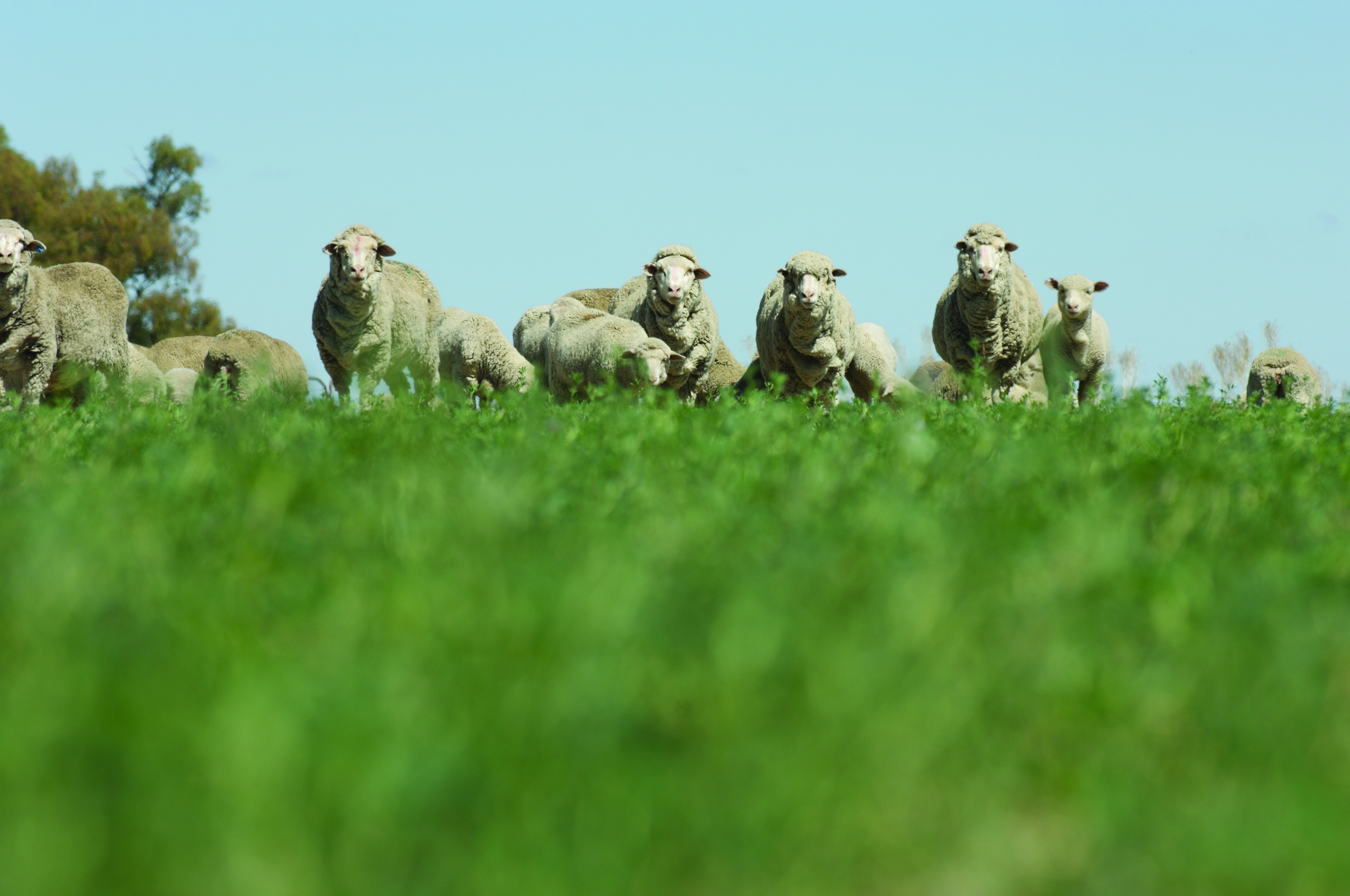
Sowing pastures species (option 4 above) incurs an upfront cost but can be very beneficial to address natural resource issues (e.g., to increase groundcover, reduce salinity), improve production outcomes (e.g., growing weaners) or when targeting new markets (e.g., heavy weight lambs). The primary focus is to make better use of what is currently growing.
Modifying animal demand by changing the annual livestock management calendar will help match existing animal demand to pasture supply. It may also highlight opportunities for increasing stocking rate, or a need to reduce stock numbers during periods of the year.
It is more important to match supply and demand within seasons than for the entire year. This ensures animal demand is met and pasture resources are not degraded by over or under utilisation.
Time of lambing
This is the most important decision in the management calendar. Lactation and growing lambs provide a major boost to animal demand that can be aligned to peak pasture supply to increase total production and reduce risk and costs.
Guidelines for the optimum time of lambing have been developed (see Chapter 10.1 in MMFS Module 10 Wean More Lambs) and can be related to the length of the growing season:
- Self-replacing Merino flocks: lambing 3–4 months before the end of the reliable growing season is about the optimum. Lambing later allows more ewes to be run, but weaner management has to be excellent as they will be lighter when the feed quality falls. If the decision to lamb later is made, supplementary feeding to weaners is more cost effective than feeding pregnant or lactating ewes during the low pasture growth periods.
- Prime lamb flocks: lambing 3–5 months before the end of the reliable growing season can produce a better result because it maximises the chance of finishing the lambs on pasture which is often the cheapest source of energy and protein.
The Lifetime Wool project has ewe management guidelines, tools and tips and background research results with economic analyses for sheep producers across southern Australia (see signposts).
Many farms run sheep and cattle as well as a cropping enterprise. In such cases, the feed demands of the beef enterprise and the labour demands of the cropping program need to be factored in, which may alter the optimal time of lambing.
Stock sales and purchases
Timing stock sales and purchases is a constant trade-off between current and expected future prices, and current and expected future feed supply.
Aim to sell surplus stock (culls, cast for age) when the stock are still in good condition. Typically, this will be late spring or early summer in the south and late autumn in the north. In a good year, delay stock sales to improve pasture utilisation and animal liveweight at sale. In a bad year, bring stock sales forward to reduce stocking rate and conserve feed for other stock.
Similar flexibility can be applied to the timing of lamb sales and the target market, e.g., feeder, finished or hoggets (see Chapter 3.1 in MMFS Module 3 Market Focused Lamb and Sheepmeat Production).
Time of shearing
Decisions about timing of lambing and stock sales have an impact on shearing time, and timing of shearing can have important consequences for wool quality (see Chapter 2.2 inMMFS Module 2 Market Focused Wool Production). It is important to consider your whole management calendar when planning key operation which impact the profitability and productivity of your enterprise.
SIGNPOSTS
READ
A practical guide on sheep feeding and management during a drought.
As the intensity of a production system increases, matching pasture supply and quality to livestock needs with more precision makes management decisions more sensitive to pasture deficits and surpluses.
A series of guidelines and recommendations for managing ewe flocks throughout the year.
USE
View feed budget tables based on feed on offer (FOO) for annual pastures, mixed perennial and annual pastures and in dry/drought times.
A decision support software tool to help graziers improve the profitability of livestock production, through more efficient use of pastures and supplementary feeds.
A decision support software tool used to examine variability in pasture and animal production for sheep and beef enterprises.
Develop a drought feeding strategy for sheep or cattle by determining feed requirements for different sheep age groups and pregnancy or lactation status.
Develop a drought feeding strategy for sheep or cattle by determining feed requirements for different sheep age groups and pregnancy or lactation status.
Develops a drought feeding strategy for sheep or cattle by determining feed requirements for different sheep age groups and pregnancy or lactation status.
Assists sheep producers proactively manage the nutrition of their ewe flock through the reproduction cycle utilising condition scoring and feed on offer (FOO) assessments.
Assists sheep producers proactively manage the nutrition of their ewe flock through the reproduction cycle utilising condition scoring and feed on offer (FOO) assessments.
ATTEND
This training will leave producers with a fully developed drought management strategy focused on production and resource allocation.
A practical, one-day workshop highlighting the key production benefits of superior genetics, plus feed management for improved reproductive performance and livestock productivity.
Designed for woolgrowers and is aimed at improving weaner management of their Merino flock, targeting 95% weaner survival to one year of age. WWW identifies key practical actions and tools for commercial enterprises to implement on farm to achieve this performance aim.
Hands-on workshop focused on improving ram performance and working longevity in commercial sheep enterprises. The workshop is designed increase the skill of producers across the key components of ram performance and impacts on overall breeding enterprise performance, including anatomy, physiology, spermatogenesis, metabolic demands, health, disease & biosecurity and the financial impact of the ram team.
Assists the commercial self-replacing Merino production sector in recognising and placing importance on the total lifetime productivity potential and value of their Merino ewes (fleece, meat and surplus stock) and identifying ‘passengers vs. performers’.
The LTEM course is delivered in small groups of 5-7 sheep producers that meet six times per year with a professional trainer. During these hands-on sessions, the group visits each participating farm and learns skills in condition scoring, pasture assessment and best practice ewe and lamb management to increase reproduction efficiency and wool production, mainly through reducing ewe and lamb mortality.
This program is delivered as a mix of workshops and on-farm coaching to assist you in building your own plan to improve lamb survival within your business. The first step is knowing where you have come from, knowing your potential, and identifying your opportunities for improvement.





